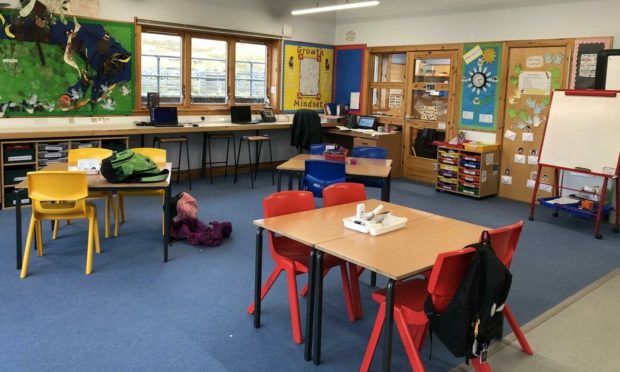The percentage of school absences due to Covid-19 has been increasing steadily since schools reopened.
Only the Western Isles has seen numbers decline this week.
This is as of August 31, according to the most recent statistics from Public Health Scotland. The service tracks the percentages of students and staff not in school because of Covid-related reasons.
This includes absences due to either sickness or isolation protocol.
In some regions, such as Aberdeen City, the percentages are similar to the third week of last school year. In others, the change is more dramatic, with some councils seeing lower rates while others are dealing with some of their highest absences to date.
But in all council areas, the vast majority of Covid-related absences are due to isolation, not sickness. Some of the larger local authorities have as many as 1,000 pupils at home because of Covid-19.
What are the numbers?
Using statistics from Public Health Scotland, the Press and Journal tracks the percentage of Covid-19 related absences in each local authority. The charts are updated every Thursday.
Argyll and Bute currently has the largest percentage of absences at 8.3%. Next is Highland with 5%, Shetland with 4.8% and Aberdeenshire with 3.2%. Aberdeen City, Moray, Orkney and the Western Isles are all below 3%.
Most students were on summer holidays between June 25-August 17 2021.
All of the mainland council areas have seen a steady increase in the percentage of Covid-19 related school absences since the start of school on August 17.
The island councils present a mixed picture. Shetland is currently seeing a higher percentage of absences than at any point in the past year.
How do Covid-19 school absences compare to last year?
Five out of eight local authorities in the north and north-east have more absences now than at a similar point last school year. This is in keeping with the general trend in Scotland.
Across all local authorities, there was about a 2% increase in Covid-19 related absences over last year.
Isolations far outweigh illness
Recent changes to self-isolation protocols mean that fewer students have to isolate when a pupil tests positive. Children under five will not have to isolate unless they have symptoms, and they don’t have to take a PCR test, although this is encouraged.
Young people aged five to 17 can end their isolation when they get a negative PCR result, as long as they don’t have symptoms.
Still, self-isolation accounts for a much higher percentage of pupil absences than positive tests or illness.
Public Health Scotland provides further breakdowns of school absences, including how many pupils are home sick, as opposed to in isolation. Scotland-wide, there are 25,622 pupils isolating, as of August 31.
That is almost four times the 6,471 pupils who are absent with a Covid-19 related illness.
Read more from the Schools and Family team
Vaccinating younger children: Expert says it’s a balancing act
Learning from the best: What lessons can Scottish schools take from Estonia?
